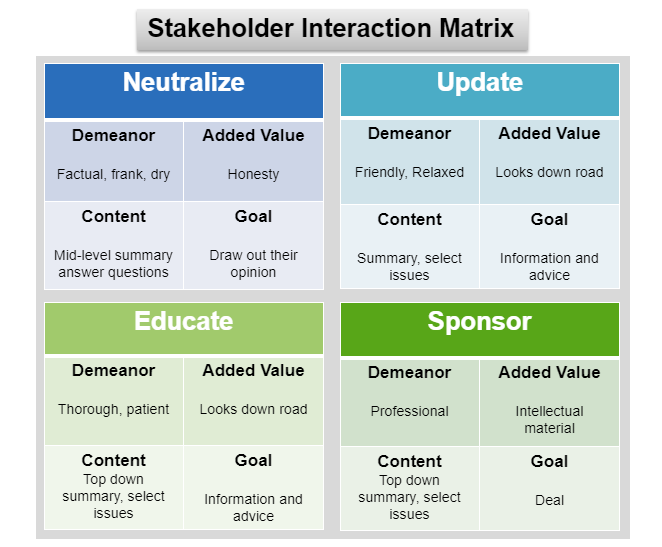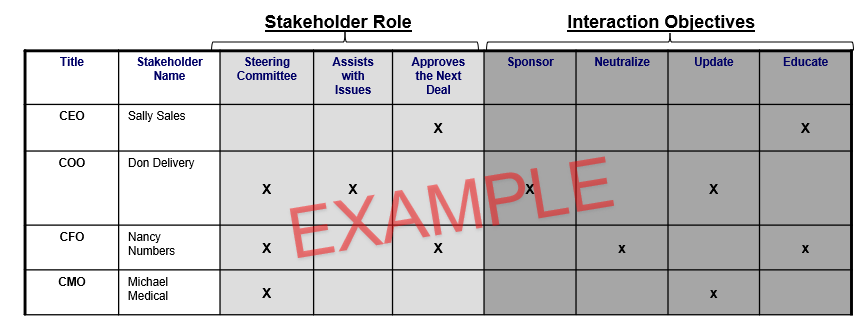How to Build a Client Communication Plan
When working in a project-based environment, your client stakeholders hold the keys to success. Key stakeholders set the direction and tone for the organization. Therefore, ensuring they understand and are bought into the vision should be a continuous effort focused on building lasting relationships with players both above and below the line of safety.
Obtaining buy-in and support requires a deliberate plan and an understanding of each stakeholder’s position and attitude so we can meet them where they’re at. Obtaining buy-in and support ensures that we know how to effectively communicate with clients whose attitudes toward PPP may significantly range. The first step is acknowledging the key stakeholders and identifying how they feel about our organization and/or the project. Stakeholders often fall into four key categories that inform how we interact with them:
- Neutralize: A stakeholder who is against our organization or the project
- Educate: A stakeholder who is neutral or positive but cannot be a supporter because of lack of understanding
- Update: Supporter who needs a heads up and can be used for information
- Sponsor: Key sponsor who supports the initiative and/or can approve the next deal

After evaluating the stakeholders’ attitudes, it’s important to consider their role as it relates to our organization and the project to formulate a comprehensive communication plan (as shown below). In the example below, we see that CEO Sally Sales is the decision-maker. She is an above-the-line-of-safety buyer who will play a critical role in the current project, however, she needs more information to fully support the initiative. Building a plan that provides Sally with an ongoing high-level summary will help her understand, and therefore buy into, our objectives. Don Delivery, on the other hand, will help us work through project challenges and move forward to the next deal. He is a vocal proponent of our work. To ensure he remains involved and interested, he desires regular project updates. As CFO, Nancy Numbers determines the financial feasibility of the next deal. Coming from a strictly numbers perspective, she is hesitant to approve the organization and the project, so the communication plan should demonstrate the ROI through a factual, transparent tone to build trust. Finally, Michael Medical has a strong voice on the steering committee. With regular updates delivered in a friendly, relaxed tone, he too can transform into a big project supporter.

Combining Stakeholder Roles with Interaction Objectives enables you to create an informed communication plan. Some other Client Communication Best Practices include:
Client Communication Plan Best Practices:
- Ensure the plan is detailed and tactical
- Include internal owners and participants, deadlines, objectives, etc.
- Ensure each meeting with key stakeholders adds value and advances the relationship
- Only a finite number of opportunities to capitalize on meetings with key stakeholders
- Leave them willing to meet with you again
- Use the natural rhythm of the project to time meetings for maximum value-add, e.g., link to key junctures and deliverables in the work plan
